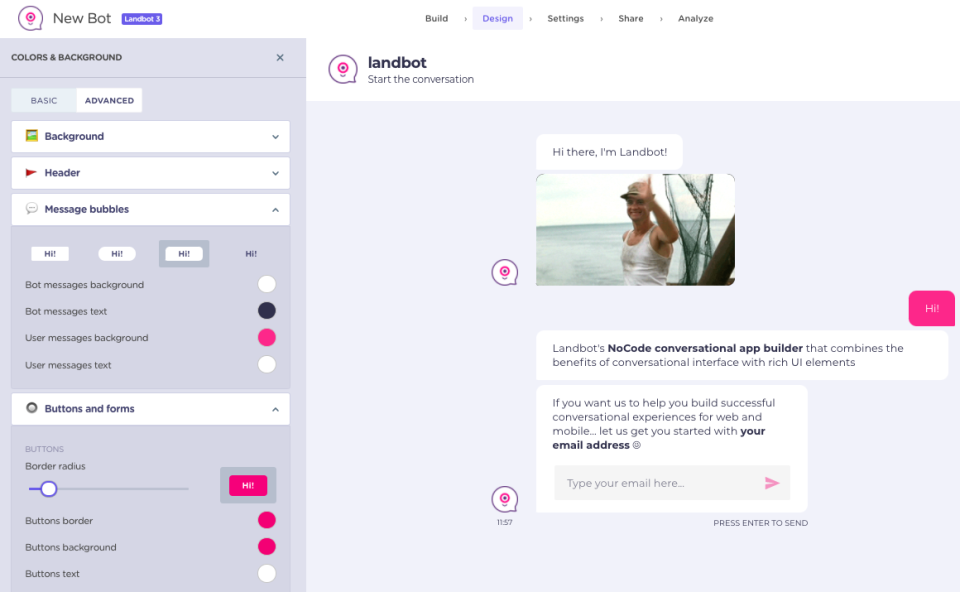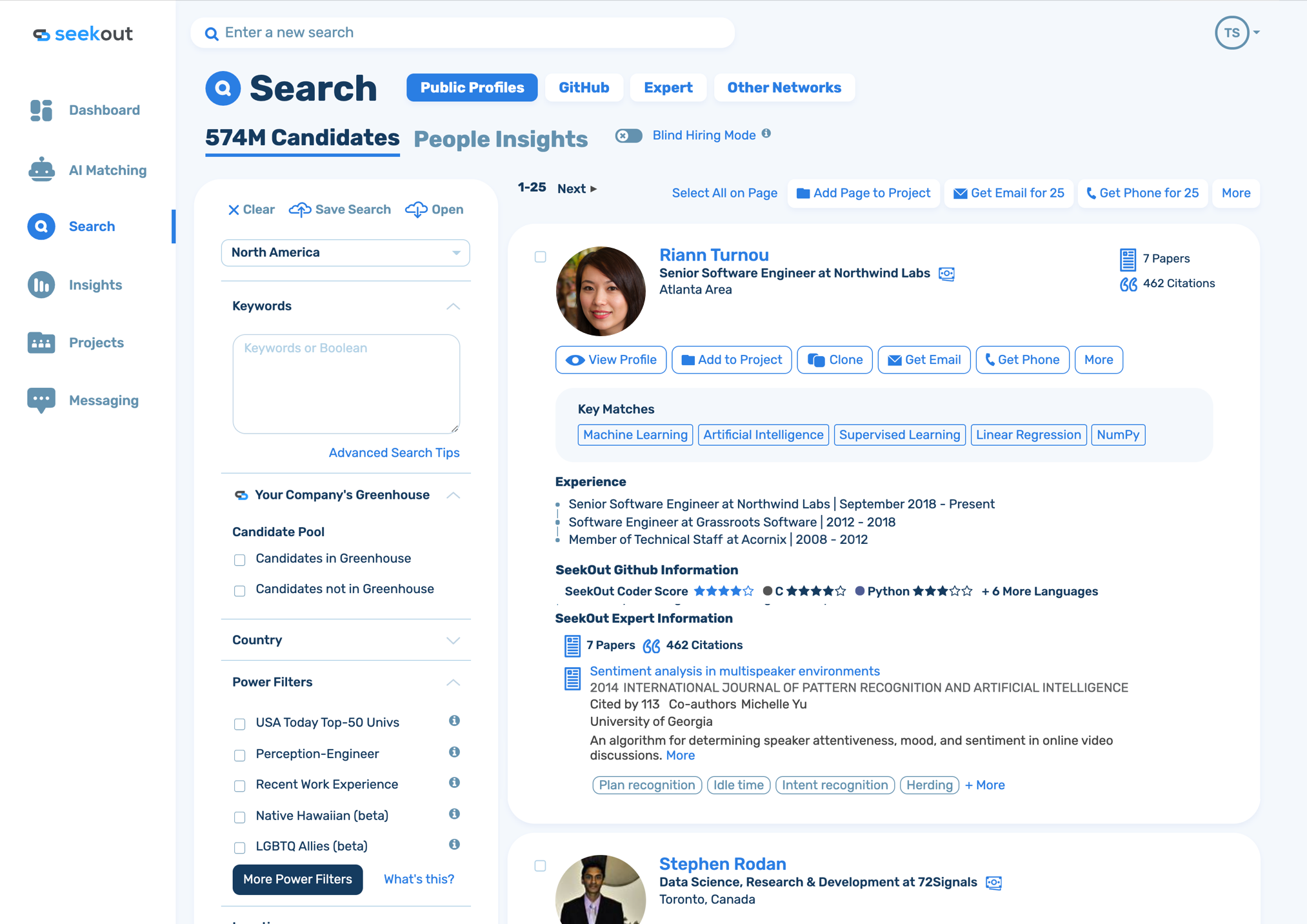Small businesses can avoid disappointment with their first AI implementations by focusing on these three proven use cases.
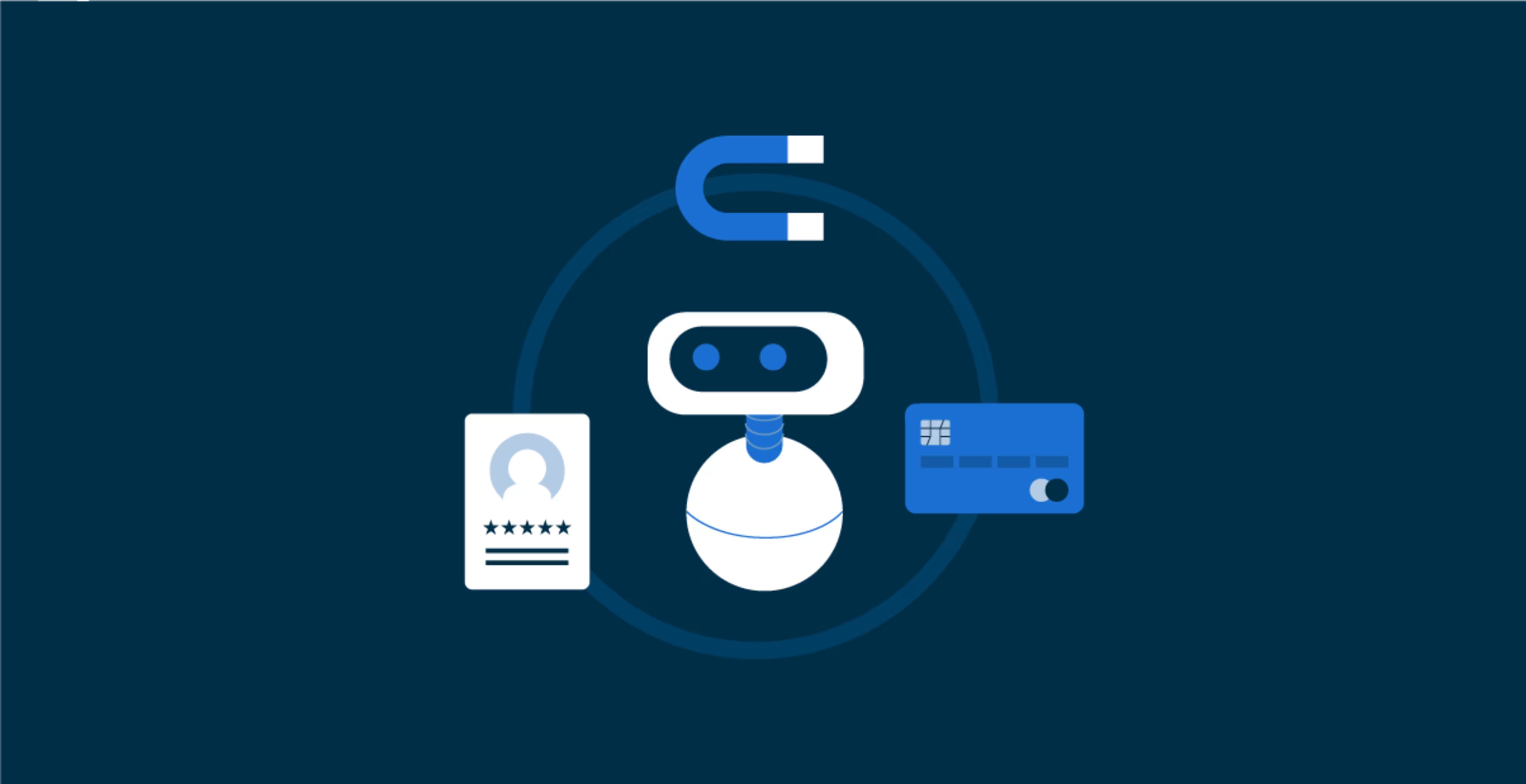
Is artificial intelligence (AI) the real deal or just a bunch of hype? In a 2020 report, Gartner argues that it’s actually both at the same time (full research available to Gartner clients):
AI techniques solve a wide array of business problems and generate significant returns on investment. However, unbridled hype generated by the industry, the press and overenthusiastic software vendors is creating confusion that makes it difficult for organizations to set the right expectations regarding business outcomes.
For small businesses especially, AI technology can be a double-edged sword. Not only do you need to temper your organization’s own expectations with AI (spoiler: it’s not a silver bullet for all of your problems), but you also have to find an artificial intelligence software system that can deliver real value in a vast ocean of vendors relying on myths and misconceptions to make a sale.
How can small businesses reduce their risk of AI failure? In one word: practicality. By focusing on the most practical applications of artificial intelligence for your small business, you can control the scope of your AI system implementation, narrow down your software options, and set realistic goals to measure success.
Here, we’ll look at three such applications of AI; use cases where AI is delivering real results for small businesses today, instead of promises for tomorrow. Any of these applications would be a great area to focus on for your first AI solution purchase.
Practical application #1: eCommerce
In a Capterra survey of small business leaders conducted in April 2020, 54% said they had implemented or had plans to implement the means to offer their products or services online due to the COVID-19 pandemic. To say small businesses have been pushed into the deep-end of eCommerce over the past year is an understatement.
Fortunately, artificial intelligence has helped with the transition. Besides providing the base technology to allow businesses to sell their goods online, eCommerce platforms are leveraging AI in a number of ways that can help small businesses grow revenue and cut costs:
Using natural language processing and autocomplete suggestions, AI can translate confusing and misspelled customer searches to deliver the products and services they’re looking for. One study found that adding autocomplete to your search bar alone can boost sales by 24%.
Just like you’d find on a giant site like Amazon, intelligent product recommendations use data from a customer’s browsing habits, searches, and previous purchases to offer suggestions and personalize the shopping experience. After a single interaction with a recommendation, customers become three times more likely to convert.
By analyzing past sales data, seasonal trends, and forecasts, AI can optimize inventory management to ensure you always have the right amount of the right goods in stock. Reducing the number of out-of-stock and overstocked items can lower overall inventory costs by 10% or more.
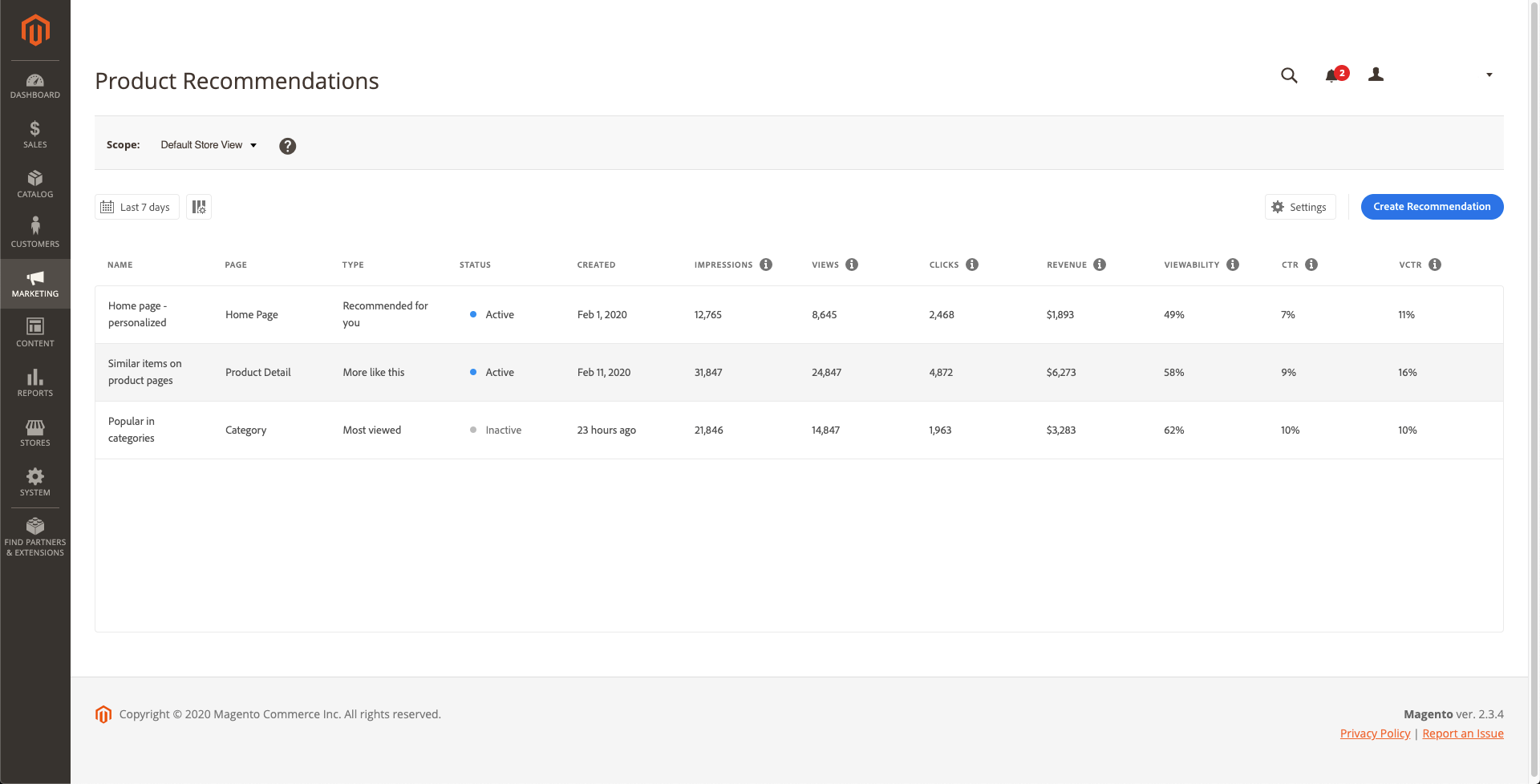
Customize the product recommendations that customers get in Magento Commerce (Source)
If you already have an eCommerce platform with AI capabilities, but have yet to utilize them, ask your vendor if you have the basics (and the data) in place to take the plunge. If you don’t have an eCommerce platform at all, keep AI capabilities in mind when evaluating your options.
Possible goals with your ecommerce ai implementation:
Reducing cart abandonment
Lowering inventory costs
Increasing revenue per customer
Practical application #2: Customer service
When it comes to competing against larger competitors, there is one area where the small guys have a clear advantage: customer service. A survey by ZenDesk found that 71% of customers expect better service from small businesses, and 77% don’t mind paying more at small businesses if the customer service they get is great.
That’s the good news. The bad news is that customer service can also be a cumbersome headache if you lack important staff and resources. And with the threat of one bad review that can sink your entire online reputation, the stakes couldn’t be higher.
Needing help, small businesses are increasingly relying on AI to pick up the slack in the form of chatbots. Chatbots—which are like customer-facing virtual assistants—use natural language processing, speech recognition, and machine learning to answer questions and complete requests.
The benefits that chatbots bring to small businesses are immense:
For simple questions and requests, chatbots can search company support information to provide answers or direct customers to the right resource without ever having to involve an employee. Available 24/7, customers don’t have to wait until business hours to solve their problems.
If something does need to be escalated to a human, the AI algorithm in a chatbot can go through a script to get basic information and even their preferred channel for help (phone call, text, email, etc.). The chatbot can then direct the request to the best representative for that scenario, saving them time while providing a better customer experience.
Gartner predicts that by 2022, 70% of customer interactions will involve emerging technologies like chatbots. With an IBM study finding chatbots can reduce customer service costs by up to 30%, it’s not hard to understand why. If you haven’t jumped on the chatbot bandwagon, they're a great way to ease into AI tools.
Possible goals with your customer service ai implementation:
Lowering customer service wait times
Reducing customer service headcount
Increasing customer issue resolution rates
Practical application #3: Recruiting
Even in a down economy, finding and hiring talent remains a top priority. In a survey from The Manifest, 51% of small businesses say they plan to hire new employees in 2021. For those predicting revenue growth this year, that number jumps to 63%.
With unemployment still hovering around 6%, there’s plenty of great hires out there for the taking. But how do you find them? Better yet, how do you pick them out from hundreds of job applicants? Lacking the time to vet candidates properly, Gallup found that companies fail to choose the person with the right talent for the job an eye-opening 82% of the time.
Hopefully you can guess where I’m going with this. With the help of AI, small businesses can cut recruiting costs, improve the candidate experience, and ultimately increase their odds of landing a great hire. Here are some examples:
Candidate sourcing tools leverage AI to crawl the internet (social networks, mostly) and find potential candidates that check any number of important boxes related to experience, skills, or otherwise. Working with a bigger pool of options, recruiters can then reach out to these sourced candidates to convince them to apply for a job.
As the job applications come in, AI can pore through resumes and reference the same criteria used during sourcing to rank or rate the applicants. Being able to start with the most promising candidates first, this can be a major time saver for recruiters and hiring managers who don’t have time to go through every application themselves.
When deciding who to hire, AI can look at performance data, skills assessments, and other datasets from current top performers, then use predictive analytics to tell users which candidate is most like those that have already proven themselves in their organization. The result is better hiring decisions.
Nearly two-thirds (63 percent) of recruiters in a 2018 Korn Ferry survey say AI has already changed the way recruiting is done in their organization, and 64% of recruiters that use AI say it’s made their job easier. If you’re looking for a way to introduce AI to your small business, recruiting software with an AI application is a great place to start.
Possible goals with your recruiting ai implementation:
Increasing the number of qualified applicants per job opening
Lowering time to hire
Reducing involuntary turnover
AI is not just for big businesses anymore
As the number of artificial intelligence applications continues to grow, small businesses are taking notice. No longer considered futuristic tech for only the largest companies, 30% of small businesses in a 2020 Capterra survey say they’re already using artificial intelligence technology and machine learning, with an additional 33% saying they plan to use it in the next 12-18 months.
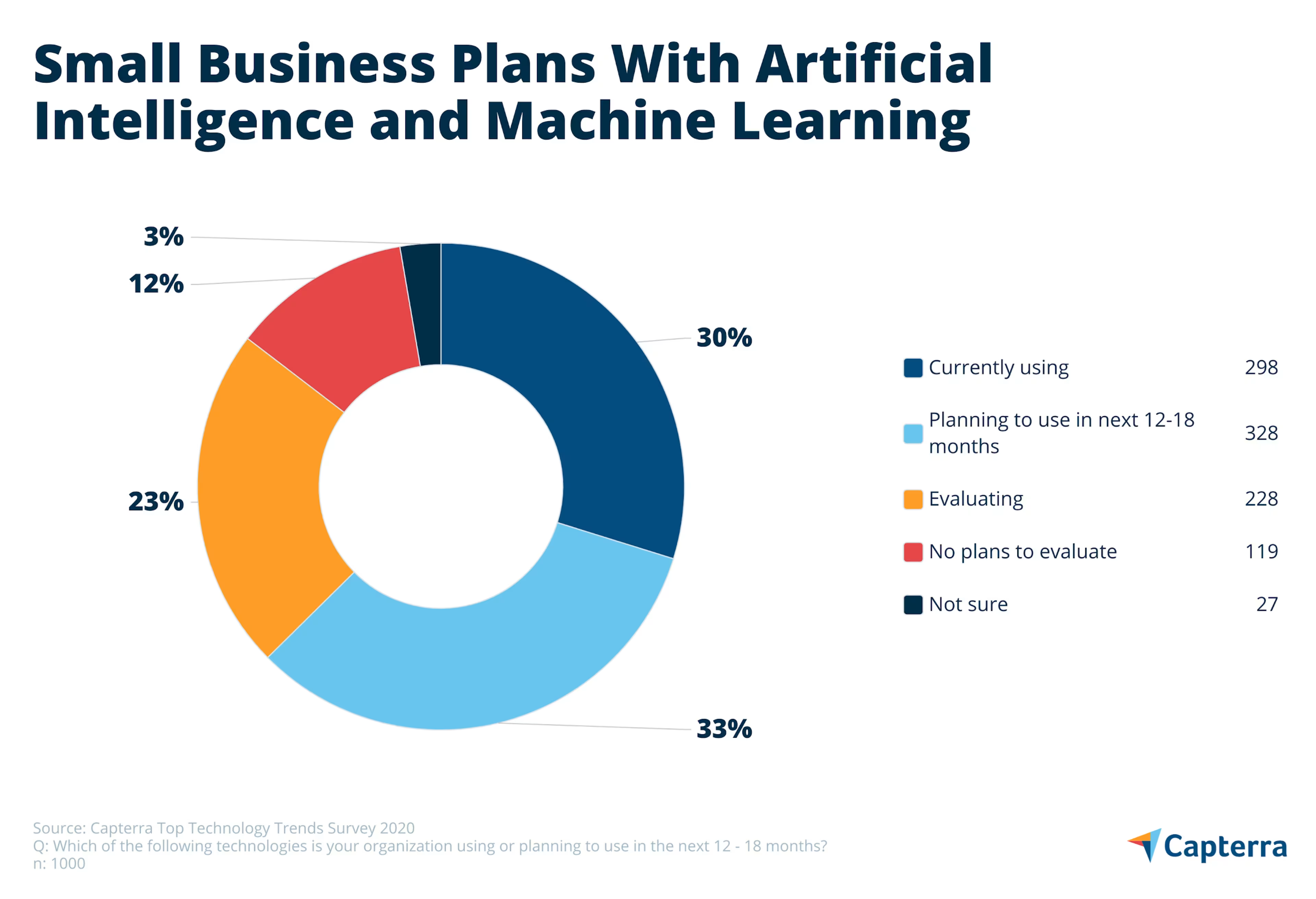
Set your sights too high, or set a course for uncharted AI territory, and disappointment will surely follow. But if you focus on practical and proven applications of artificial intelligence like the ones we’ve discussed here, you can lower your adoption risk and increase the likelihood that AI will work for your small business needs.
Interested in more resources about AI like this? Check these out:
Want to learn about hiring AI services for your business needs? Our list of the top AI companies and their features will help you narrow your search. Read more in Capterra’s artificial intelligence company hiring guide.
